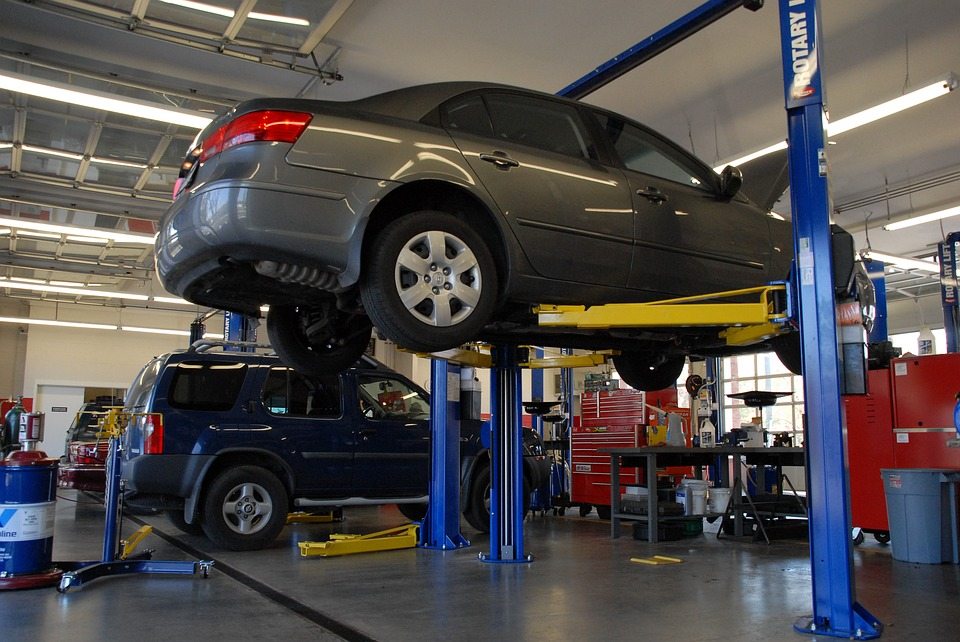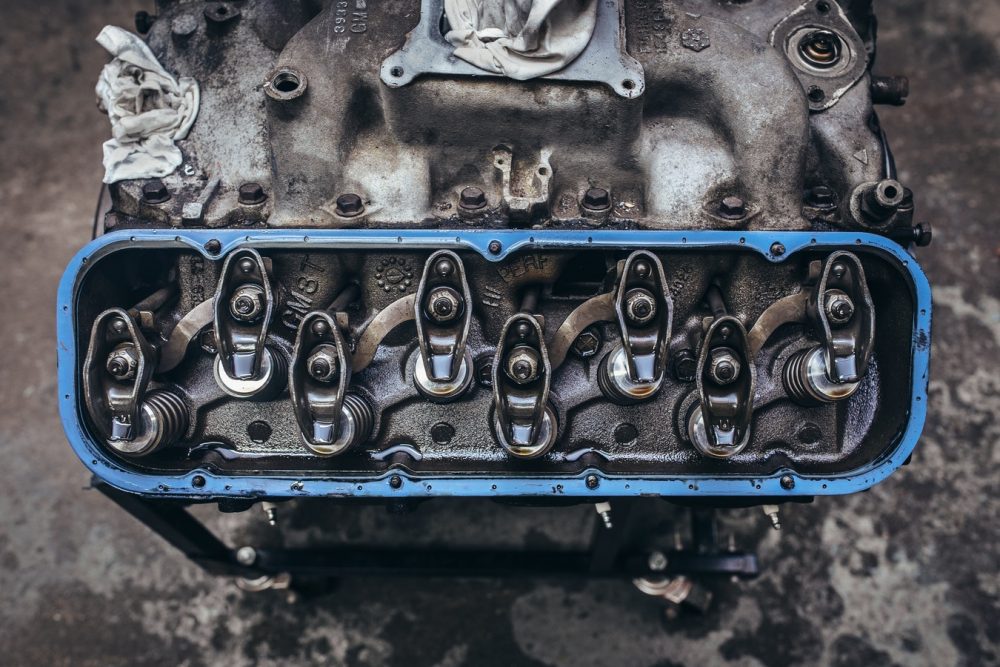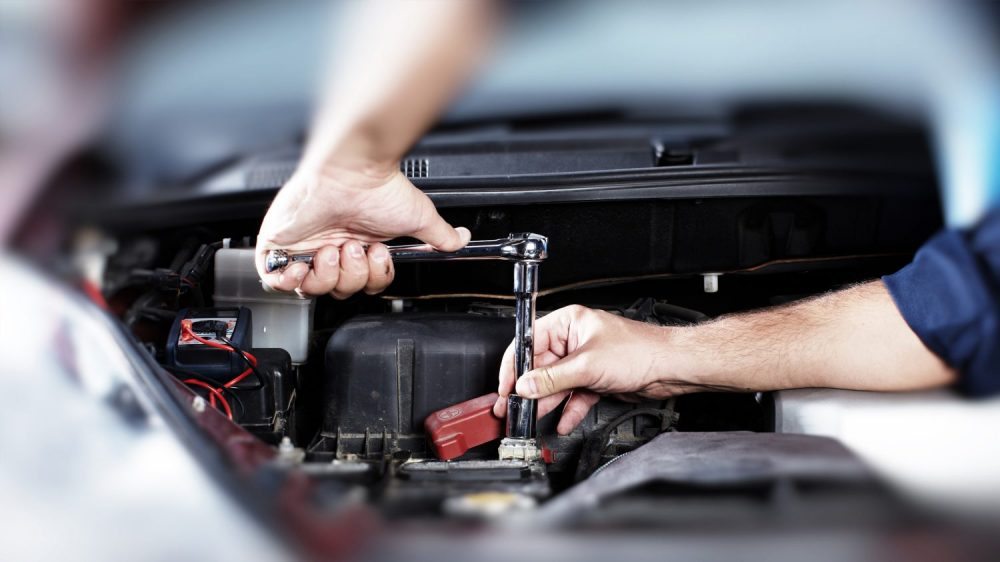Hopefully every car owner understands the need to service their car. You cannot expect to simply buy a car and not perform any type of car maintenance.
Regular servicing of your vehicle keeps it running at maximum performance as well as increasing its lifespan. In the long run, this will save you a serious amount of money from avoiding large bills.
One of the most common ignored service product is the motor oil. If not changed regularly, it can become clogged up and reduce the lubrication. Eventually, the engine will start becoming louder and louder until it eventually gives up.
Using the best synthetic motor oil for your car will ensure that all the components of the engine are lubricated as well as keeping the emission to the correct level.
Table of Contents
What Does a Full Car Service Include?
Servicing your car is not as simple as just changing the oil. There are many vital car components that also need to be changed at different intervals.
If you plan to service your car yourself, having the correct tools makes things much easier. If you are lucky enough to have access to a garage car lift, this will also make your life much easier but if not, regular jacks will be required.
There are three terms that determine what service your car requires:
- Interim service is usually around 6,000 miles or 6 months
- Full service is usually around 12,000 miles or 1 year
- Major service is usually around 24,000 miles or 2 years
In general, a full service will include all the interim servicing and more. The major service will include everything that needs to be serviced.
In order to help you fully understand what your car requires, we have compiled a complete car maintenance checklist below.
Engine Service Checklist
The largest part of any car service will be the engine as it has the amount of vital components. Below is a list of the recommended engine service parts that you will need to maintain for a healthy running engine.
- Replace the engine oil – Interim
- Replace oil filter at the same time as the oil – Interim
- Check if the cambelt needs changing (car dependent) – Interim
- Replace car air filter or cold air intake – Full
- Check spark plugs – Replace where necessary – Full
- Check antifreeze and top up if not at limit – Full
- Check Engine tray is intact and not missing bolts – Full
- Drain and replace coolant – Major
When servicing the engine, it’s always recommended to check components such as the radiator, coolant cap seals and hoses, electric cooling fan, tension fan, alternator belt and drive belt. If you find that there are issues, you may want to use the appropriate temporary solutions to keep your vehicle on the road.
For example, you can use a head gasket sealer for a blown head gasket or use a radiator stop leak to prevent coolant leaking the radiator. The purpose of these temporary solutions is to allow you to get to a garage or somewhere else important.
Another popular product is an oil additive for older engines, which helps extend the life of the engine by cleaning, protecting and ensuring the viscosity is correct.
For those that like to go a step further, you may even want to use an engine paint. This will improve the aesthetics and provide a layer of protection against corrosion and fluids.

Fuel Service Checklist
Fuel servicing is not really included within an interim service unless necessary. During a full service of a car, its important to check the condition of the fuel lines and fuel cap seals because if they are blocked, the car will not perform as expected. During a major service, the fuel filter should be removed and replaced with a new filter.
If you have been using primarily premium fuels, you will have cleaner fuel hoses, lines and injectors and they will last much longer. Maintaining a high octane can also be achieved by using an octane booster, which simply pour straight into the fuel system. Some vehicle may experience knocking or pinging whilst using a lower quality fuel.
However, if you are having fuel related issues, you can try using the best fuel injector cleaner you can find to see if it clears the lines. If you drive a diesel, there are many diesel fuel additives that will help too. Otherwise, you may have an expensive repair bill upcoming to replace the fuel lines and hoses.
Transmission Service Checklist
Depending whether your car is manual or automatic, the transmission service may differ. Even if the car is automatic, there are many forms of automatic transmission from DSG, Tiptronic and paddle shift.
- Check operation of clutch and gearbox – Interim
- Check clutch fluid levels and top up if necessary – Interim
- Apply grease to propshaft if necessary – Full
- Check gearbox fluid color and level and top up or change if necessary – Major
The gearbox automatic transmission fluid level must be at its correct level. If not, gear changes will be erratic and harsh. Effects from incorrect gearbox fluid levels will be more noticeable as the car drives round corners or uphill/downhill.
As a temporary solution to hard shifting, slipping or shuddering, you can use a transmission additive.
Electrical Component Service Checklist
Often forgotten when servicing a car are the electrical components, which need to be maintained appropriately. Without proper electric current flowing around the car, many mechanical components will fail or not run as efficiently.
- Test electrics such as headlights, horn and dashboard warning lights – Interim
- Check battery voltage and replace if necessary – Interim
- Check Glow Plugs and Replace if burnt out – Full
- Inspect High Tension leads – Full
- Test starter motor is fully operational – Major
- Test charging rates of the alternator – Major
However, many cars have more electrical components than pre 2000 vehicles. Also, with the introduction of hybrids and fully electrical cars, servicing the electrical components will be even more extensive.
When you are having electrical issue with your car, it is recommended that you change the battery first. Cold weather and regular flat batteries can cause damage over time. Upgrading to the best car battery you can find will ensure these problems are solved straight away. Regular flat batteries can cause havoc with other electrical components if not fixed and is generally not good for your car.
In terms of other electrical replacements, you can easily upgrade to a loud car horn as a replacement to your old electrical OEM horn. Some even go a step further with a complete air horn setup that is very similar to a train horn.

Suspension and Steering Servicing Checklist
The suspension and steering contain vital safety components and must be maintained regularly.
- Check power steering fluid level and top up if necessary – Interim
- Check suspension components such as drop links, bushes and ball joints for wear. Replace in pairs where necessary – Interim
- Test shock absorbers – Interim
- Check and test condition of steering rack – Interim
- Test wheel bearings for play in the wheel – Interim
- Check the wheel spacers if installed – Interim
- Grease suspension components to extend life span – Full
Failure to service suspension and steering parts can cause severe safety concerns that could be fatal at high speeds.
Exhaust Servicing Checklist
During all servicing, a check of the exhaust for leaks or excessive noise is usually required. Corrosion of the exhaust is fairly common and cause the exhaust to eventually fall off.
Checking to see whether the exhaust emits certain colored smokes is an excellent indicated to whether there are problems. If it has failed the emissions test, it may be worth trying a catalytic converter cleaner. If this still doesn’t solve the issue, you may require a new catalytic converter.
Brake Servicing Checklist
Servicing your brakes is extremely perfect to ensure adequate stopping time for your vehicle. Due to the safety nature of the braking system, many checks are carried out during all services, such as the following:
- Check brake pad wear and replace if necessary – Interim
- Check brake calipers are secure with no leaks – Interim
- Check brake fluid level and top up if required – Interim
- Check brake cylinder, pipes and hoses for leaks or corrosion – Interim
- Check and test handbrake and tighten and lubricate if necessary – Interim
- Check brake rotors for scoring, pitting and cracks – Interim
- Test brake servo is operating correctly – Full
- Replace brake fluid and bleed system for air – Major
Servicing the brakes requires many checks that are quick and easy to do. Ensuring you are using the best brake pads and changing the discs when required, you will ensure maximum stopping power.
If you have some spare time available and want to improve the appearance of your brakes and wheels, you could attempt to paint the calipers. Using a suitable caliper paint that is able to withstand high temperatures and harmful contaminants, you can paint the calipers to any color you wish.
Wheels and Tires Servicing Checklist
Often overlooked in terms of car servicing is checking your wheels. The wheels are the only thing between the car and the road, therefore its critical that they are safe. With the wheel removed from the car:
- Check tire for cracks or punctures (in particular the sidewall) – Interim
- Check tire depth to be above the legal limit – Interim
- Adjust tire pressures using a tire inflator if not set correctly – Interim
- Check wheels are balanced correctly – Interim
- Check locking wheel locks and standard bolts using a torque wrench – Interim
The tire pressure is one of the most important things as they can cause havoc when not set correctly. Scenarios that come from incorrect tire pressures include:
- Incorrect tire wear
- Handing not as it should be
- Reduced fuel economy
We highly recommend having a tire pressure gauge in your car and checking your the pressure on a regular basis.
If you are planning on doing winter driving, you will want to ensure you have the plenty of tread. Using winter tires for the snow and ice is also an option for those who regularly drive in poor conditions.
Interior Servicing Checklist
The final part to a fully serviced car is checking interior parts that ensure a comfortable and safe drive.
- Replace cabin filter dependent upon age/mileage – Interim
- Check temperature of air conditioning – Interim
- Check seat belts are all fully operational – Full
- Check door locks work correctly – Full
- Lubricate door and bonnet hinges – Full
When it comes to the air conditioning system, you can either go to the garage to get it serviced or do it yourself with an AC recharge kit.
Underneath The Car
Checking the undercarriage of your car is not necessarily required for most new cars but highly recommended for older cars. You may notice areas of corrosion that require a rust prevention spray to prevent further damage.
However, before using a protective layer, you should remove the rust beforehand. This can be achieved by using a wired head brush to remove loose rust and then a rust converter to transform the rust into a polymer compound that will not rust again. Once the underbody is completely free of rust, you can use an undercoating to prevent rust coming back.
After Your Car Has Been Serviced
You will want to ensure that if a garage has serviced your car they stamp your cars service book. The garage would have conducted a road test after the service but you should also do your own with the window down and no music playing.
Most modern cars will also require their ECU to be programmed so that it knows that it has been serviced. You may notice many “service now” messages appearing on your cars computer. In order to clear this, you will need a car diagnostic tool.
How Much Does a Car Service Cost?
There will only be a small minority of car owners that will be able to service their cars themselves. This is due to not having all the tools for the job or simply not having the time. In this article we have discussed what happens during an interim, full and major service but how much do they cost?
For a Interim service, you should expect to pay between $130 – $200 dollars at an independent garage. A Full service you should expect to pay between $200 – $300 dollars at an independent garage. Finally, a Major service you should expect to pay between $300 – $400 dollar at an independent garage.
A service at your local dealership will usually cost 1.5 times to 2 times more than an independent garage. Some car owners believe that this is daylight robbery but to many other car owners, its simply adding value to a car with great service history records.
How Often Should You Service Your Car?
There isn’t a fixed occurrence or mileage until you should have your car serviced. There are many factors that determine this but usually its a mixture of age and mileage covered since last service. However, cars that are used for track usage as an example may need to be serviced before every race.
However, in terms of how often to service your car, we recommend that a car should have the full service every year or 15,000 miles (which ever comes first). Many modern cars will have an on board trip computer that will notify the owner when the car needs to be serviced. Sticking to a regular servicing pattern will reduce the risk of expensive repair bills in the future.+
Buying a Car With No Service History
We have all heard the generic “Trust me, the car has been serviced, I have just misplaced the service history documents” plenty of times. They may be telling the truth but the majority of the time, the car might not have many service records at all.
A little known secret is that you may be able to recover the service history via the dealership for a small fee. The car may not have been serviced at the dealership all of its life, however its worth doing just for some paperwork. You will also be able to see if the seller is lying by them telling you “the car has always been serviced at the dealership”.
The plus side to buying a car with no service history is that you will be able buy the car for less. It would then be advisable to spend the savings on a complete full service on the car. It’s always advised to have a mechanic or someone who knows about the car to come along with you. They will be able to tell if the car is a lemon or not.
Conclusion
Not everyone is able to perform a complete service to their car. However things such as replacing wiper blades, adding windshield washer fluid and using glue for plastic car parts to keep the interior looking fresh are certainly some things that you are able to do yourself.

